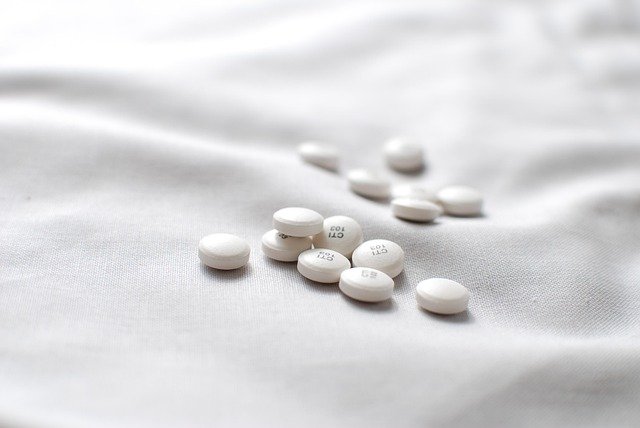Medications Linked To Causing Swelling And Angioedema
Understanding which medications can trigger angioedema is crucial for patient safety and effective treatment planning. This potentially life-threatening condition involves rapid swelling of deeper skin layers and mucous membranes, often affecting the face, lips, throat, and airways. Various prescription and over-the-counter medications have been identified as potential triggers, making medication awareness essential for both healthcare providers and patients managing this serious allergic reaction.

Angioedema represents a serious medical condition characterized by deep tissue swelling that can occur anywhere in the body but most commonly affects the face, lips, eyelids, and throat. When medications trigger this response, the consequences can range from uncomfortable swelling to life-threatening airway obstruction. Healthcare professionals and patients must understand which drugs pose the highest risk and how to manage medication-induced angioedema effectively.
What Are Medications That Cause Angioedema?
Several categories of medications have been consistently linked to angioedema development. ACE inhibitors, commonly prescribed for high blood pressure and heart conditions, represent the most frequent pharmaceutical trigger. These medications can cause angioedema in approximately 0.1-0.7% of patients, with symptoms potentially appearing months or even years after starting treatment. Angiotensin receptor blockers (ARBs), while generally considered safer alternatives, can also trigger similar reactions in some individuals.
Nonsteroidal anti-inflammatory drugs (NSAIDs) including aspirin, ibuprofen, and naproxen constitute another significant category. These widely used pain relievers can trigger both allergic and non-allergic angioedema reactions. Additionally, certain antibiotics, particularly penicillin and sulfonamides, have been documented as angioedema triggers in susceptible individuals.
Understanding Prescription Medications Linked to Angioedema
Prescription medications associated with angioedema extend beyond the commonly recognized triggers. Certain chemotherapy agents, immunosuppressive drugs, and even some psychiatric medications have been implicated in angioedema cases. Contrast agents used in medical imaging procedures also pose risks, particularly for individuals with previous allergic reactions.
Hormone replacement therapies and oral contraceptives containing estrogen can trigger hereditary angioedema episodes in predisposed individuals. Some antiepileptic drugs, including phenytoin and carbamazepine, have also been associated with severe allergic reactions including angioedema. Blood thinners, particularly newer oral anticoagulants, have emerging reports of angioedema associations.
Identifying Drugs That Trigger Angioedema Reactions
Recognizing angioedema-triggering medications requires understanding both immediate and delayed reaction patterns. Some drugs cause rapid-onset reactions within minutes to hours of administration, while others may trigger symptoms after prolonged use. ACE inhibitors exemplify delayed-onset triggers, with some patients developing angioedema after years of uncomplicated use.
Certain drug combinations can increase angioedema risk beyond individual medication effects. Patients taking multiple medications that affect the renin-angiotensin system face elevated risks. Additionally, individuals with compromised kidney function may experience altered drug metabolism, potentially increasing angioedema susceptibility.
Treatment Approaches and Management Strategies
Effective angioedema management begins with immediate medication discontinuation when a drug trigger is suspected. Emergency treatment focuses on airway protection and symptom control using antihistamines, corticosteroids, and epinephrine when indicated. Severe cases may require intubation or emergency tracheostomy to maintain breathing.
Long-term management involves identifying safe medication alternatives and implementing prevention strategies. Patients with medication-induced angioedema should wear medical alert identification and maintain updated medication allergy lists. Healthcare providers must carefully evaluate medication histories and consider angioedema risks when prescribing new treatments.
| Treatment Type | Provider/Option | Cost Estimation |
|---|---|---|
| Emergency Department Visit | Hospital Emergency Room | $1,500-$3,000 |
| Allergist Consultation | Specialized Allergy Clinic | $300-$500 |
| EpiPen Prescription | Local Pharmacy | $300-$600 per pack |
| Antihistamine Treatment | Over-the-counter/Prescription | $10-$100 monthly |
| Allergy Testing | Allergy Specialist Office | $200-$1,000 |
Prices, rates, or cost estimates mentioned in this article are based on the latest available information but may change over time. Independent research is advised before making financial decisions.
Prevention and Risk Reduction
Preventing medication-induced angioedema requires proactive communication between patients and healthcare providers. Detailed medication histories, including previous adverse reactions, help identify potential risks before prescribing new treatments. Genetic testing may benefit individuals with suspected hereditary angioedema, particularly when medication sensitivities run in families.
Patients should understand the importance of reporting any swelling, breathing difficulties, or unusual symptoms when starting new medications. Healthcare providers should educate patients about recognizing early angioedema signs and appropriate emergency responses. Regular medication reviews help identify unnecessary drugs that could be discontinued to reduce overall risk.
Medication-induced angioedema represents a serious but manageable condition when properly understood and addressed. Through careful medication selection, patient education, and appropriate emergency preparedness, individuals can minimize risks while maintaining necessary medical treatments. Healthcare providers play crucial roles in identifying high-risk patients and implementing appropriate monitoring strategies to ensure medication safety.
This article is for informational purposes only and should not be considered medical advice. Please consult a qualified healthcare professional for personalized guidance and treatment.




